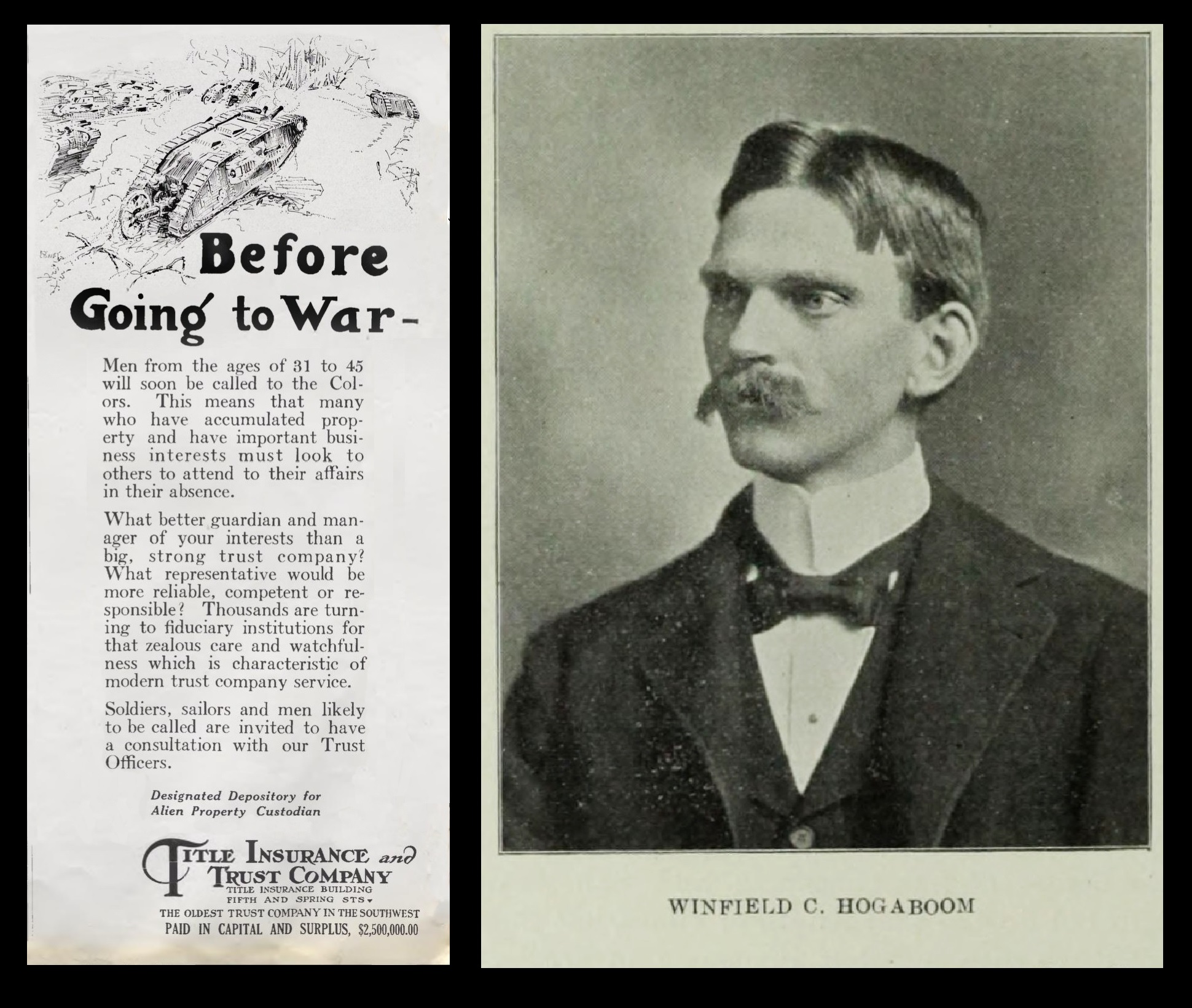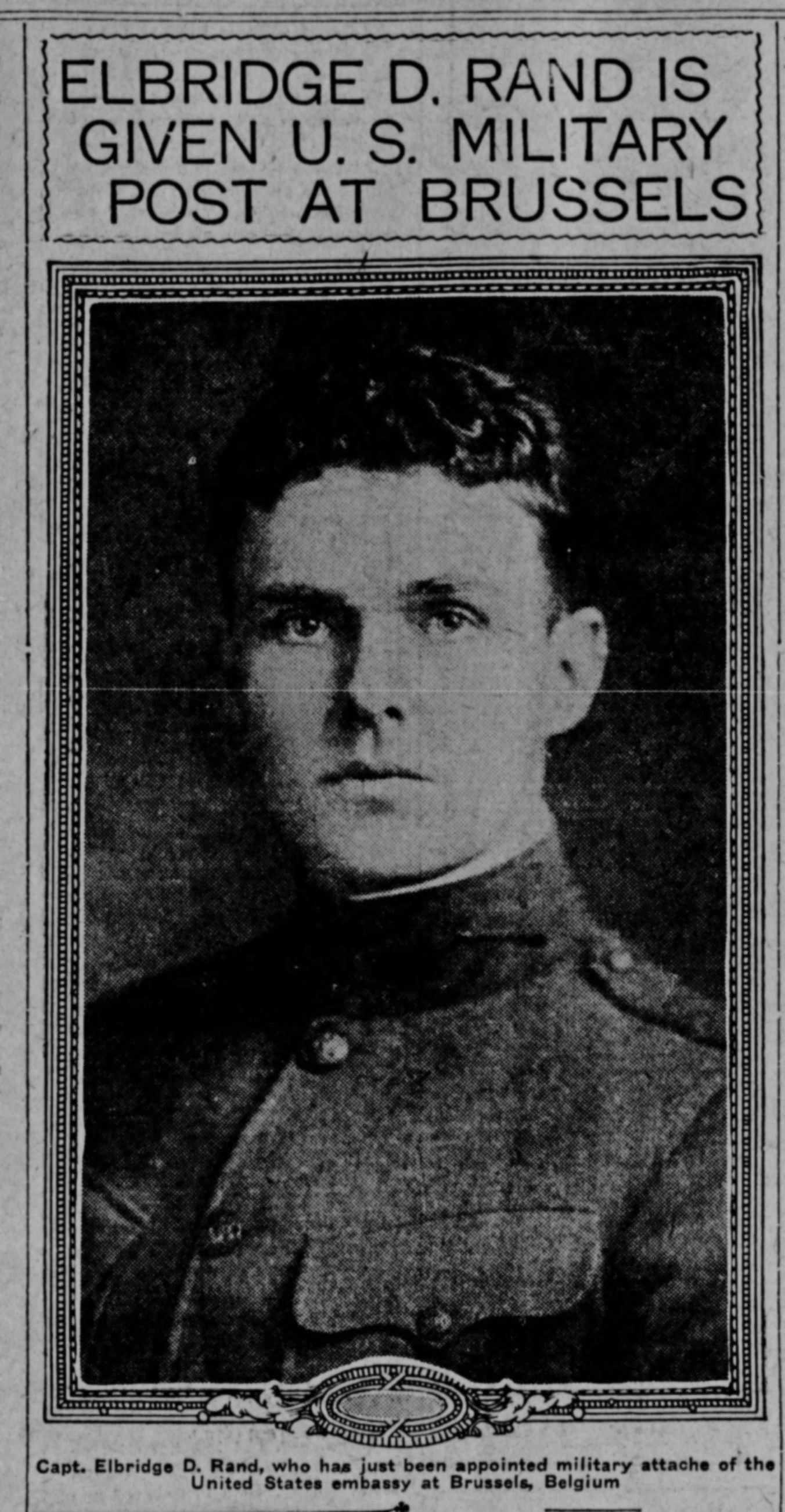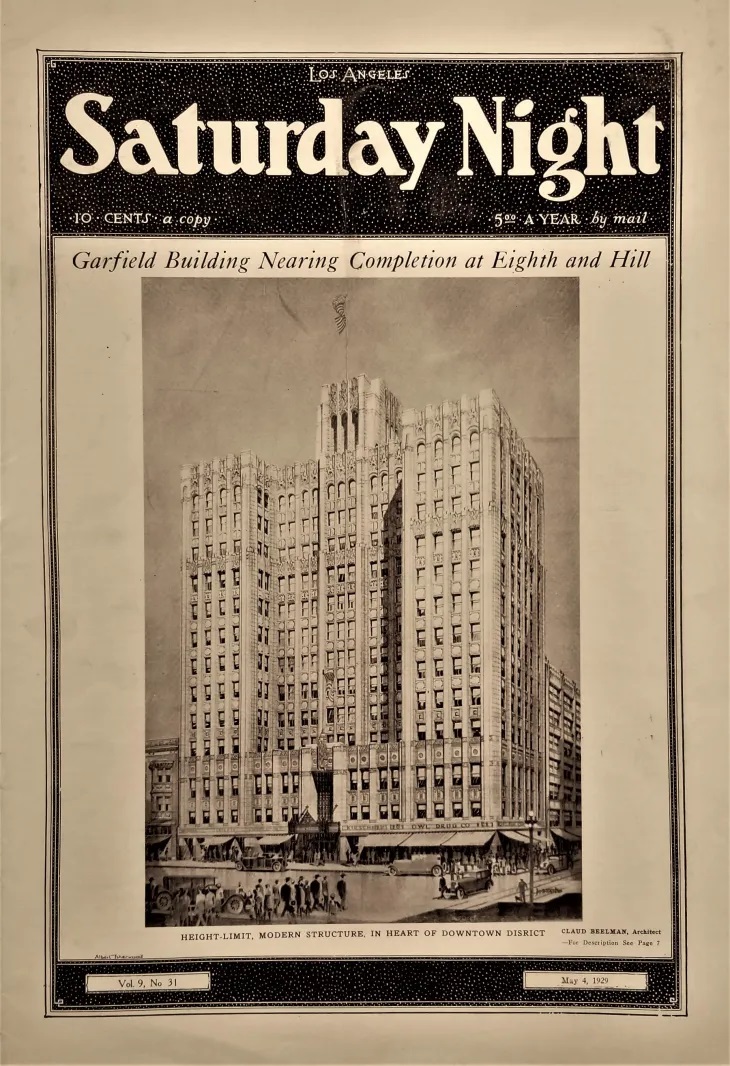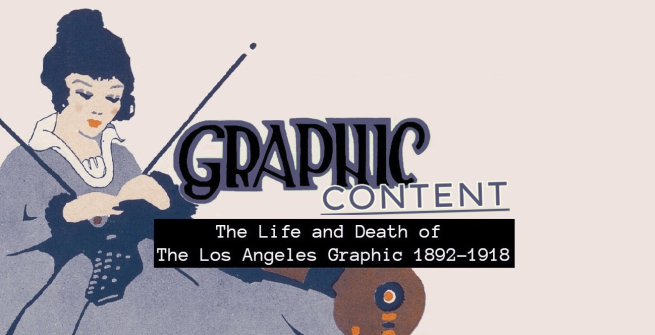This is the final part of a seven-part blog series exploring the long-forgotten Los Angeles arts & culture magazine The Graphic. The Los Angeles Public Library owns what is likely the most complete collection of this magazine anywhere and our participation in California Revealed means that we can share this rare and unique resource with the world. This is the final entry in the series.
Part VII: “Gone West”
Charles Lapworth’s name was gone from the masthead long before the final issue of The Graphic was published. While he was not drafted, his disappearance was directly connected to the war. Lapworth’s words to "take the war seriously" seemed to resonate and, subsequently, he was extended invitations to lecture to local organizations. At some point in 1917, he met actor and fellow Englishman Charles "Charlie" Chaplin. His association with Chaplin would mark a new chapter in Lapworth’s life and ultimately take him away from journalism altogether. Chaplin was planning to tour the United States, using his celebrity to sell Liberty Bonds and he invited Lapworth to deliver his "take the war seriously" platitude to the masses that had gathered to see the "Little Tramp" in person. It’s unclear if Lapworth sold his interest in the paper to Rand or if he even had a financial stake in The Graphic to begin with, but his name never reappeared in the magazine’s pages after the September 20, 1917 issue. By 1918, the Los Angeles City Directory listed his employer as Chaplin Studios, and he was mentioned in a 1918 Times profile of Chaplin studios. In stark contrast to Lapworth, Rand did his best to stay involved with The Graphic, but the war would continue complicating the magazine’s operations.

All Good Things Must Come to a…Hiatus?!?
In August 1917, The Los Angeles Evening Express reported that Elbridge Rand was called into reserve training in San Francisco and, in his absence, Rand had hired Alfred Fenton as General Manager as well as a handful of editors to keep The Graphic up and running, notably Winfield Hogaboom, a writer who had served as publicity director of the 1915 San Diego Exposition. By September 1918, the first cases of Spanish Flu were reported in Los Angeles, and by October 1918, Hogaboom was quarantined after his son contracted the virus. That same month Elbridge Rand was shipped off to Europe leaving The Graphic in limbo. In what turned out to be the final issue of The Graphic, the magazine’s remaining employees fully expected that the publication would resume once the war ended and, given Rand’s dedication to the magazine even after he had entered military service, it wasn’t an unreasonable prospect. Jo Neely was called upon to write what turned out to be the final editorial. She focused on Elbridge Rand and his dedication to the magazine: “From the time of its purchase, he was obsessed heart and soul to make the periodical a thing of beauty and solid worth, and although he enlisted shortly after the accent of the United States into the war, and was of necessity removed from close contact with the publication, his interest did not abate in the slightest degree…” Neely further implied that Rand’s patriotism for his country was the reason for this publishing interruption as he "has quite recently received the title of Captain and though the paths of glory lead to high places, they also bring in their wake added duties and new responsibilities. These, in this case, render Captain Rand’s return to Los Angeles so uncertain that he deems it best to eliminate all things which might, in any way interfere with his duty to his country." She also implied that the magazine would merely be on hiatus but would resume after the war: "I am bidden to bring the public of Los Angeles and her sister cities, the news that The Graphic, that "Town and Country" of the Pacific Coast which saw the light of day under the present regime a year and a half ago, is about to say farewell to its many readers for the period of war. That this is done with the deepest regret goes without saying for its short life has been scintillatingly radiant, and its passing will be a happy one, in that it is giving all for its country."


The final issue of The Graphic hit the streets on October 24, 1918, and most newspaper reports seemed to imply that the high cost of production had been the sole factor in The Graphic’s closing. On October 28, 1918, four days after the last issue was circulated, the Times wrote what was essentially an obituary for The Graphic, calling it "the last of the galaxy of local literary and society magazines'' while other papers stated that The Graphic had simply "gone west." The Riverside Daily Press explained that The Graphic had “ceased because of the high cost of paper and the scarcity of advertising support." It is true that production costs during the war had increased significantly and the editorial in the final issue stated that “the manufacturing cost has been practically prohibitive and its continued excellence was made possible only because its owner would not permit its high standards to be sacrificed or lowered." While the cover art remained astounding, the vivid colors that had been so vital to The Graphic’s rebirth under Rand and Lapworth are noticeably absent after May 1918, and the color palette is relegated to orange, black, and brown suggesting that ink may have been at a premium during the war. Several issues of The Graphic from this period, including the final issue, were printed in basic black and white. Scarce resources, however, weren’t the only challenge during The Great War as the patriotic sentiment encouraged young men to rush into service for their country. The reality of this noble gesture, however, meant that the enlisted had to abandon existing commitments and the people behind The Graphic were no exception. It's unclear if Elbridge Rand ever attempted to get The Graphic back up and running at any point but his experience as a military attache was merely the start of lifelong consular service that lasted until his death of a heart attack in 1936.

Saturday Night
In 1920, two years after The Graphic had ‘gone west’ the man who had the most success with the magazine, Samuel Clover, returned to Los Angeles. His attempts to be a newspaper mogul in Virginia were not nearly as successful as he had hoped so he went back to the proverbial drawing board and returned to what he did best: magazines. The fact is that Clover had already tapped into a formula that Angelenos embraced for nearly a decade so it was only logical to return to it. Clover’s new publication, Los Angeles Saturday Night was built upon the foundations of The Graphic and, in many respects, looks and even feels like an extension of The Graphic in both tone and content; it even recycles Ralph Mocine’s header artwork. Sam Clover put just as much care, consideration, and heart into Saturday Night as he did with The Graphic, even enlisting his wife Mabel as his associate editor. It’s not unreasonable to conclude that Saturday Night is The Graphic if Sam Clover had not sold the magazine in 1916. Clover and his wife ran The Graphic until their deaths in 1934. The definitive history of Saturday Night was already written by the late, great Jane Apostol and published in the Spring 2004 edition of the Southern California Quarterly but, for something readily accessible, I suggest heading over to the Homestead blog where our friends at the Homestead Museum have written a wonderful piece on Clover and Los Angeles Saturday Night. [Author’s note: The Los Angeles Public Library, sadly, does not own copies of Los Angeles Saturday Night].
The history of the Graphic is a story of people, not just the men and women who wrote, edited, created art, and published the magazine but the Angelenos who welcomed the publication into their homes. It was a publication that challenged the notion that early Los Angeles lacked culture and sophistication and captures the zeitgeist of a city with monumental aspirations. Much like the city it covered, The Graphic was a vibrant, dynamic publication filled with life, color, and fun. The Graphic shows Los Angeles on the precipice of greatness and is a valuable resource in understanding the city during a pivotal time in its evolution. Although the tragedy of the 1986 Central Library fire appears to have taken our earliest issues of The Graphic and the entirety of its predecessor, The Capital, from our collection, the Los Angeles Public Library is proud to be able to share what remains of this phenomenal resource; it is ripe for rediscovery.

—Thanks to the librarians who helped with this series including Kelly Wallace, Christina Rice, Amanda Charles, Ani Boyadjian, and Eileen King, with a special acknowledgment to Paul Spitzzeri of the Homestead Museum.
